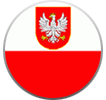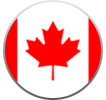On this page:
- School locations
- Types of schools
- Facts about Polish education
- Benefits of private schools in Poland
- Choosing a school in Poland

School locations
While private school education in Poland only began in the 1980s, it’s becoming a popular option for many families. There are now great private schools in all major Polish cities, as well as some smaller towns.
These schools can be ideal for international students from Canada and other English-speaking countries. In addition to English-language instruction, many of these schools also offer room and board.
There are also some great private international schools in other areas of Poland. For instance, these can be found in Gdánsk, Szczecin, Łódź, Bydgosczc, and Białystok, among other places. If you’re looking for a long list of schools and high schools in Poland, check out this Wikipedia entry.
Types of schools
There are many different types of private schools in Poland. These schools offer a variety of appealing programs for students who want study abroad.
International schools: Poland has numerous private schools for international students. These schools normally provide room and board and use English as the main language of instruction. They also typically have high-level academics.
Language schools: Many private schools in Poland offer language programs. While most international schools use English as the main language of instruction, some also offer programs or courses in other languages, such as French, Italian, Spanish, and German. Moreover, some schools have bilingual or multilingual programs, where students take courses in two or more languages (such as English and Polish).
IB schools: The IB program is offered by many private schools in Poland. This is common in secondary schools (middle and high schools), where the IB diploma might be offered. This is an especially popular option for international students.
Boarding schools: Some private schools in Poland offer room and board to accommodate foreign and international students. Others offer homestay programs or help students find accommodations.
Secondary schools: Many private schools in Poland are secondary schools, for middle and high school students. Some of these are part of a kindergarten to grade 12 program, which covers elementary to high school. Others are stand-alone middle or high schools.
Elementary schools: Some private schools in Poland are elementary or primary schools, covering kindergarten to grade 6. Some of these schools are stand-alone, while others extend into secondary school.
Facts about Polish education
The education system in Poland
Primary school (or elementary school)
Primary school is similar to elementary school in North America. It normally starts at age seven, and goes for six years. In Poland, though, primary school is divided into two three-year cycles. In the first cycle, one teacher teaches all subjects, often in an integrated way. In the second cycle, there is more subject-specific teaching, conducted by specialist teachers.
Junior high school (or middle school):
Junior high school lasts three years and marks the end of basic, compulsory education. At this level, students are evaluated based on their continuing results and a comprehensive examination in the humanities, sciences, and foreign languages. Starting in September of 2017, junior high school will be abolished, and primary school will be extended to 8 years, as it was before 1999.
Upper secondary education (or high school):
This starts after compulsory education. It’s meant to prepare students for the labour market and/or tertiary education (what North Americans call “university” or “college”). Upper secondary school is completely optional. This contrasts with Canada and the US (among other countries), where high school is compulsory until the age of 16 (or in some states 18).
Below, we outline the different grade levels, and years of compulsory education, in Poland. We also compare Poland’s grade level system to that of five other countries—Canada, the United States, Britain, France, and Germany, and one international curriculum—the International Baccalaureate (IB).
For each country, we highlight the years of compulsory education in blue. This doesn’t apply to the IB program, though, since it’s not affiliated with any one country.
Starting age |
Poland |
Canada |
US |
Britain |
France |
Germany |
IB |
0+ |
Nursery |
Nursery |
Nursery |
Nursery |
|
Kinderkrippe |
|
3-4 |
Preschool |
Preschool |
Preschool |
Nursery |
Petite section |
Kindergarten |
Primary years programme |
4-5 |
Preschool |
Junior Kindergarten |
Preschool |
Reception |
Moyenne section |
Kindergarten |
Primary years programme |
5-6 |
Kindergarten (Grade 0) |
Senior Kindergarten |
Kindergarten |
Year 1 |
Grande section |
Kindergarten |
Primary years programme |
6-7 |
Grade 1 |
Grade 1 |
Grade 1 |
Year 2 |
Cours préparatoire |
Grundschule |
Primary years programme |
7-8 |
Grade 2 |
Grade 2 |
Grade 2 |
Year 3 |
Cours élémentaire première année |
Grundschule |
Primary years programme |
8-9 |
Grade 3 |
Grade 3 |
Grade 3 |
Year 4 |
Cours élémentaire deuxième année |
Grundschule |
Primary years programme |
9-10 |
Grade 4 |
Grade 4 |
Grade 4 |
Year 5 |
Cours moyen première année |
Grundschule |
Primary years programme |
10-11 |
Grade 5 |
Grade 5 |
Grade 5 |
Year 6 |
Course moyen deuxième année |
Hauptschule |
Primary years programme |
11-12 |
Grade 6 |
Grade 6 |
Grade 6 |
Year 7 |
Sixième |
Hauptschule |
Primary years programme |
12-13 |
Grade 7 |
Grade 7 |
Grade 7 |
Year 8 |
Cinquième |
Hauptschule |
Middle years programme |
13-14 |
Grade 8 |
Grade 8 |
Grade 8 |
Year 9 |
Quatrième |
Hauptschule |
Middle years programme |
14-15 |
Grade 9 |
Grade 9 |
Grade 9 |
Year 10 |
Troisième |
Hauptschule |
Middle years programme |
15-16 |
Grade 10 |
Grade 10 |
Grade 10 |
Year 11 |
Seconde |
Hauptschule |
Middle years programme |
16-17 |
Grade 11 |
Grade 11 |
Grade 11 |
Year 12 |
Première |
Höhere Handelsschule |
Diploma programme |
17-18 |
Grade 12 |
Grade 12 |
Grade 12 |
Year 13 |
Terminale |
|
Diploma programme |
FAQs about Poland education
How new is private school?
Quite new. Private primary and secondary education began in the late 1980s. Private or non-state schools are partly funded by the government and partly by fees and donations by parents and other organisations, such as religious orders. Read more.
When do children start compulsory education?
Compulsory schooling starts at the age of six or seven, from the “0” class kindergarten (Polish przedszkole, which literally means “preschool”), and at the age of seven, for the 1st grade of primary school (Polish szkoła podstawowa).
How long does compulsory education last?
Compulsory education lasts nine years, from kindergarten (in primary school) to the end of junior high or middle school.
Which subjects are taught?
This varies based on the school. Schools in Poland cover core subjects, such as math, science, the language arts, art, history, music, and physical education. Many also cover more specialized subjects, such as civic education, physics, astronomy, chemistry, biology, geography, technology, computers, and religion or ethics. Education tends to get more specialized as students progress through the ranks.
What is the school day like?
Starting in elementary or primary school, students normally have several lessons throughout the day. These can be given by core teachers or specialist teachers. Students usually get short breaks of 5 to 20 minutes between lessons. Similar to North America, students in Poland are normally given homework from elementary school (primary school) to high school (upper secondary school). Learn more.
What are school hours?
This varies between schools. A typical school day is around 7 hours (including lunch and breaks). It normally begins between 8 and 9am and ends between 3 and 4pm.
When does the school year start?
Usually it starts on September 1st, for elementary, middle, and high schools. The exception is when September 1st falls on a weekend or holiday, in which case school will start a day or two later.
How long does the school year run and when are the breaks?
The school year goes from September to June. There are three major breaks: Christmas, Easter, and a late January or early February break.
Which days do kids go to school?
Just like most schools in Canada and the US, the school week in Poland goes from Monday to Friday.
Benefits of private schools in Poland
Private schools in Poland have lots of great features. For international students, in particular, they have several benefits.
- High-level academics: Polish private schools are renowned for their high-level of instruction and rigorous academics. They offer a wide range of challenging subjects, as well as opportunities for enrichment, through specialized programs and individualized instruction.
- Advanced study programs: Many private schools in Poland offer advanced study programs. The most common one is IB and the IB diploma, especially at the high school level. Some schools also offer AP courses and gifted programs.
- English language programs: There a lots of private schools in Poland tailored to foreign or international students. Most of these have English as their primary language of instruction. This can be ideal for the student who wants to study abroad, but doesn’t speak a foreign language (such as Polish).
- Foreign language programs: Many schools offer second-language programs (or courses) in Polish. Some also offer second-language programs in other foreign languages, such as French, Spanish, Italian, and German.
- A diverse student body: One advantage of studying abroad is the opportunity to work, interact, and likely live with students from different places. This is a special virtue of international Polish schools, where your child will be a part of a diverse student body, with kids from several countries and continents.
- Broadening one’s horizons: Going to an international school, such as one in Poland, is the ultimate way to broaden one’s horizons. Your child will be exposed to a new country, culture, and language (in fact, many of them). They’ll meet new people, go to new places, and have new experiences. They’ll also have the chance to travel across Europe and overseas
Choosing a school in Poland
Going to school in Poland is an appealing option for many international students. It can be a great way to pursue academic challenges, enrichment opportunities, learn a new language, and broaden one’s horizons.
In choosing the right school for your child, you should consider a variety of factors.
- School cost: Private schools in Poland vary in cost. Depending on many factors, annual tuition can be anywhere from $10, 000 to $60, 000. This may or may not include room and board.
- Cost of living: Living in Poland is relatively cheap compared to other countries in Europe and North America. The low prices of food, rent, and entertainment is one of the main reasons many people choose to live or study in Poland.
- Location: In addition to a school, you’ll want to find a city or town that’s the right fit. You might consider city size, culture, demographic, community, and costs, among other factors. Luckily, you can select a private school from many cities in Poland. This includes Warsaw, Kraków, Poznán, Wrocław, Rzeszów, Gdánsk, Szczecin, Łódź, Bydgosczc, and Białystok.
- School reputation: It’s important to look into a school carefully. This might involve speaking to a school directly, to others who know about it, or even looking at online reviews. The more you know about a school, the better you can decide whether it’s a good fit for your child. You might also look into whether the school is accredited, by a government or independent body.
- School fit: Overall, you’ll want to find a school that’s the right fit for your child. It should be able to meet your child’s academic, social, and emotional needs. It should also have strong support programs, including special needs support (if your child has a special need, such as learning disorder). Some other factors affecting fit include school size, philosophy, curricular approaches, extracurriculars, and student life.
- Living in Poland: Living and going to school in Poland can be a great experience for your child. Your child will be exposed to a new country, culture, and local population. Like any big move, though, there will be a learning curve. Your child will be moving to either a smaller or bigger city. They may also have to learn a new language (or at least become competent with it). And they’ll certainly have to learn new routines, customs, and traditions (this is part of the fun of going to an overseas school!).
People who read this also viewed:
- Non-public schools in Poland
- Why private school?
- Benefits of Polish private schools
- Public versus non-public schools in Poland
- Poland school uniforms
- Myths about private education
- ABC of educational terminology: Glossary of terms and concepts
-
Advice Guide
- ABC of educational terminology: Glossary of terms and concepts
- The admissions process
- Advantages and disadvantages of studying in an international school
- The application process
- Benefits of Polish private schools
- Bilingual schools
- Boarding schools
- Choosing a private or nonpublic school in Poland
- Compare schools in Poland
- English schools in Warsaw
- Homeschooling
- International schools in Kraków
- International schools
- Private school interviews
- Music education
- Myths about private education
- Non-public schools in Poland
- School open houses
- Our Kids Interview: Get to know EF Academy Oxford
- Our Kids Interview: Get to know Open School
- Our Kids interview: Get to know Regent College International Schools
- Our Kids Interview: Get to know The American School of Warsaw
- Our Kids Interview: Get to know The British School Warsaw
- Our Kids Interview: Get to know Wrocław Cosmopolitan School (two interviews, new video)
- Poland school profiles
- Private day schools
- Gifted schools & programs
- Private Jewish schools in Poland
- Language schools
- Private school tuition and costs in Poland
- Private schools in Poland
- Private schools in Poland offering French-language immersion
- English immersion schools
- Poland school uniforms
- Private special needs schools in Warsaw
- Public versus non-public schools in Poland
- Private school questions
- Private school rankings
- Reasons for choosing private schools - Our Kids’s survey report
- Religious schools
- Schools and classes for children with ADHD in Poland
- Social primary schools
- Social Schools
- Special educational needs (SPE) certificates
- Special needs schools
- Study abroad at a private school
- The first annual non-public school fair in Poland
- The first annual Our Kids non-public school expo in Warsaw was a great success
- Third Private School Expo in Warsaw - summary
- Types of schools
- Types of schools in Warsaw
- Warsaw preschool costs
- Why private school?
- Why parents go private
-
Grades
- Boarding high schools
- Choosing a high school in Poland
- Mokotow High School Campus - a new Warsaw high school and Thames British School campus
- Montessori nursery schools
- Montessori preschools
- Our Kids Interview: Get to know English Montessori School Katowice
- Our Kids Interview: Get to know FSA School
- Our Kids Interview: Get to know KIDS & Co.
- Our Kids Interview: Get to know Polish British Academy of Warsaw
- Our Kids Interview: Get to know The English Playhouse and The English Primary
- Poland education: grade levels
- Preschools in Warsaw
- Private & non-public preschools
- Private & non-public primary schools
- Private bilingual elementary schools in Warsaw
- Private high schools
- Private high schools in Warsaw
- Private middle schools
- Nursery schools
- Private primary schools in Warsaw
- Social high schools
-
Locations
- Boarding schools in Warsaw
- English schools in Kraków
- International Baccalaureate (IB) schools in Warsaw
- International schools in Warsaw
- Montessori schools in Warsaw
- Non-public schools in Warsaw
- Our Kids Interview: Get to know EF Academy
- Our Kids interview: Get to know Excellence in Education better
- Our Kids Interview: Get to know PRIMUS Non-Public Primary School No. 47 and Non-Public Secondary School
- Our Kids Interview: Get to know the Canadian School of Warsaw
- Our Kids Interview: Get to know The Primary and Secondary Schools of the Sisters of Nazareth in Warsaw
- Private Catholic and Christian schools in Warsaw
- Private day schools in Warsaw
- Private language schools in Warsaw
- Private schools in Bialystok
- Bydgoszcz schools
- Częstochowa schools
- Private schools in Gdańsk & Gdynia
- Katowice schools
- Private schools in Krakow
- Lublin schools
- Olsztyn schools
- Private schools in Poznań
- Private schools in Rzeszów
- Szczecin schools
- Private schools Warsaw
- Private schools in Wrocław
- Zielona Góra schools
- Private schools in Łódź






 POL
POL CAN
CAN